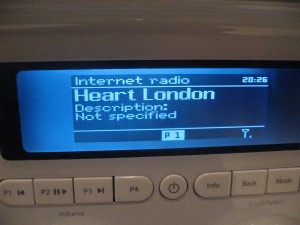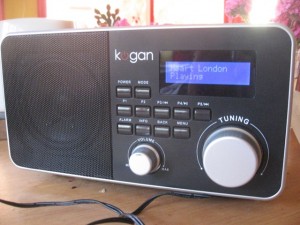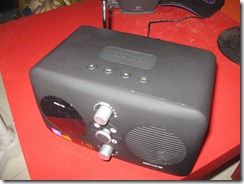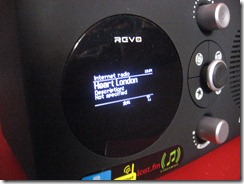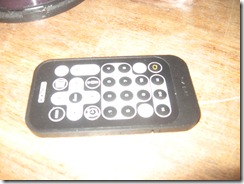Interview Series–Network audio and video
Introduction
Between the end of October and the beginning of November, I had a chance to interview people who work with two different companies that work in the consumer audio-video market and had noticed some trends concerning this market and its relevance to the online world.
One main trend was that there was increased focus by consumer-audio manufacturers who work in the popular marketplace on delivering DAB+ digital radio equipment rather than network-connected audio equipment to the Australian market. This may be because some of these firms need to see this technology become more popular here and want to have “every base covered”.
Sony
From my interview with Kate Winney I had observed that Sony had a strong presence in the connected-TV scene. Here, this was more concentrated with their newer “main-lounge-area” TVs but they are providing this functionality on some of their video peripherals, namely their BD-Live Blu-Ray players.
We agreed that Sony had no Internet radio in its product lineup although they implement Shoutcast on their high-end home-theatre receivers like the STR-DA5500ES. But we agreed that they need to make DAB+ available on their stationary “big sets” like hi-fi tuners, receivers, home-theatre-in-box systems and bookshelf audio systems. They are releasing a few DAB+ sets but most likely as stereo systems rather than as portables or components.
I had stressed to Kate about Sony implementing vTuner or a similar directory-driven service which is implemented in most Internet radios. This is because most of these services offer access to the simulcast streams of the government, commercial and community radio stations broadcasting to local countries around the world as well as the Internet-only streams of the kind that Shoutcast offers. It is also because most people who are interested in Internet radio are likely to want to use it as a way of enjoying the “local flavour” of another country that is provided by that country’s regular broadcasters rather than just looking for offbeat content.
Kate also reckoned that DAB+ digital radio needs to be available in the dashboard of cars in the new fleet, preferably as standard equipment or as a “deal-broker” option offered by car dealers for the technology to become popular. I was also thinking about whether Sony should offer DAB+ technology as part of the XPLOD aftermarket car-audio lineup.
Bush Australia
From my interview with Jacqueline Hickman, I had noticed that Bush are still focused on implementing DAB+ digital radio in Australia but are using Internet radio as a product differentiator for their high-end “new-look” sets that are to appeal to young users
Their market focus for consumer audio is on the “small sets” like table / clock radios, portable radios, small-form stereo systems but I have suggested implementing or trying some value-priced “big sets” as product ideas. This is even though they run some “main-lounge-area” TVs and digital-TV set-top boxes in their consumer video lineup.
The ideas I put forward are a DAB+ or DAB+ / Internet-radio tuner that is for use with existing audio equipment and a FM / DAB+ (or FM / DAB+ / Internet-radio) CD receiver with optional speakers. A market that I cited are the mature-aged people who own “classic hi-fi speakers” from 1960s-1980s that they like the look and sound of but may want to run them with a simpler cost-effective component. I had made a reference to the “casseivers” of the late 70s and early 80s which have an receiver and cassette deck in one housing and what these units offered. Jacqui had reckoned that companies like B&O and Bose filled the market but I have said that some of the companies have gone to active speakers rather than integrating power amplifiers in the equipment. As far as the DAB+ tuner is concerned, she suggested that a person could use a portable DAB+ set and connect it to the amplifier using an appropriate cable.
I raised the topic of IPTV but Jackie was not sure whether this will be implemented in any of their TV sets or set-top boxes at the moment. This sounds like a product class that hasn’t been properly defined with a particular standard and platform especially in this market.
Conclusion
It therefore seems to me that there is more interest by consumer-electronics companies in nurturing the DAB+ digital radio system and the DVB-T digital TV system because they are based on established technology and established metaphors; and appeal more to “Joe Six-Pack” than the Internet-based technologies.
Also, I had noticed that it takes a long time for all equipment classes to benefit from a new technology. This is more so with DAB+ digital radio and, to some extent, Internet radio where the mains-operated stationary “large sets” like hi-fi equipment and stereo systems are under-represented.



